Most omega 3 fatty acid supplements available on the market are in the purified ethyl ester form. Ethyl esters are known to be less well absorbed than triglycerides. However, lower concentration of omega 3 or lower absorption means that you have to consume quite a few capsules a day to get 1 g of EPA and DHA that you need.
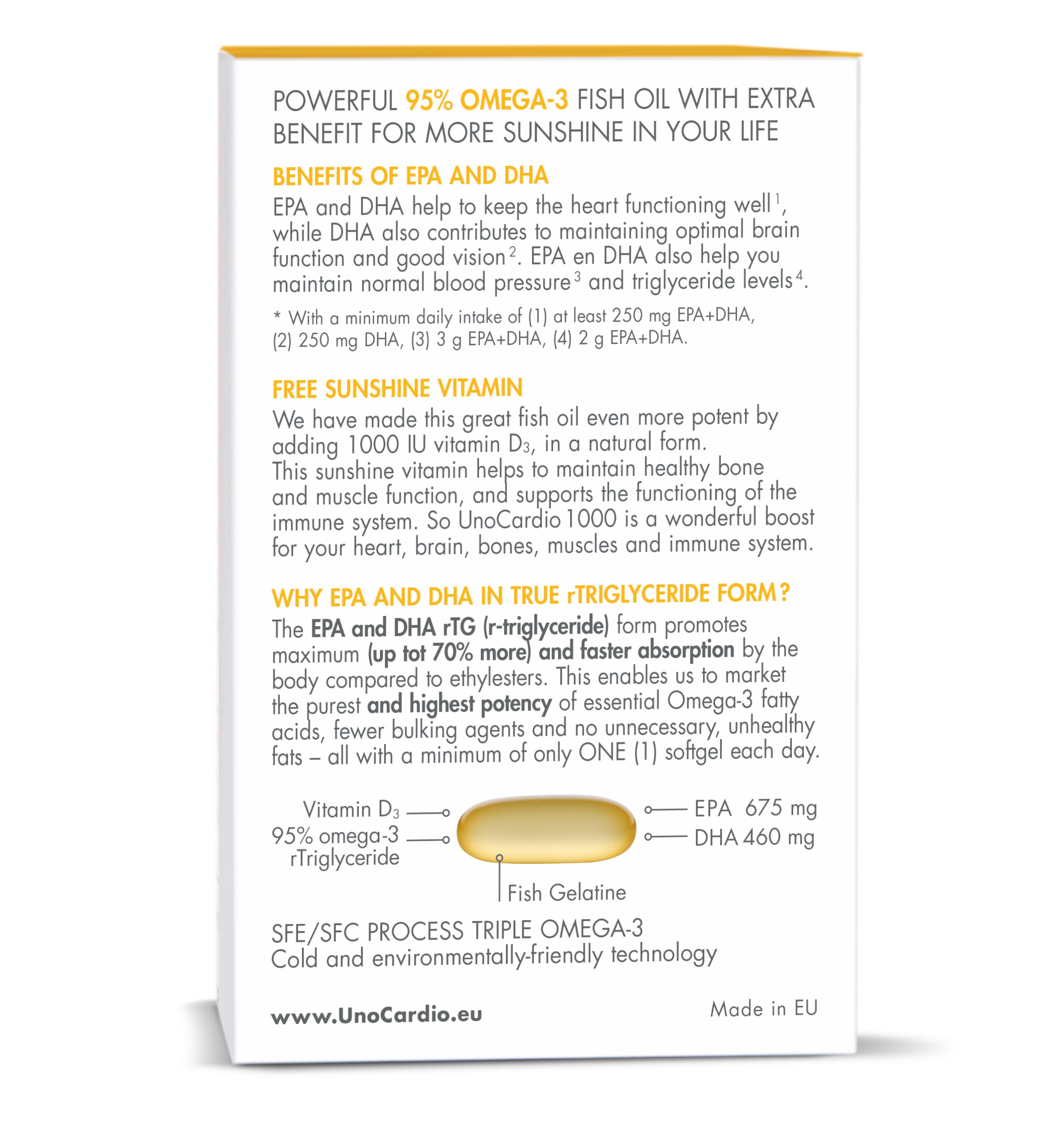
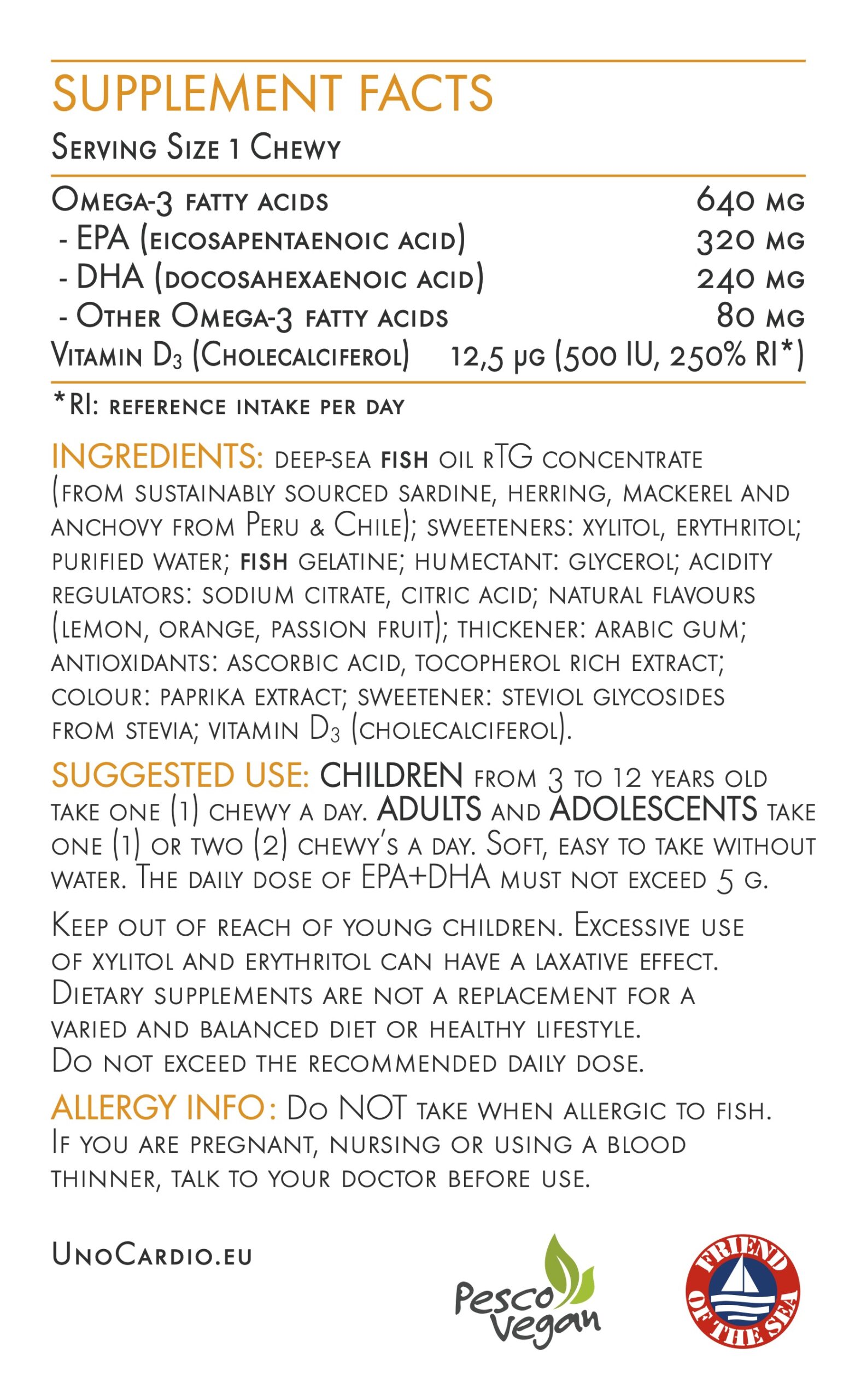
This comparison chart shows omega 3 content of different brands and the form of omega 3 fatty acids in it (eg triglyceride (TG) form or ethyl ester (EE). Contents of EPA (eicosapentaenoic acid) and DHA (docosahexaenoic acid) in milligrams are also shown. The units of measurement are presented on a scale from 0 to 1200 mg, which gives us an opportunity to compare the Omega 3 content of the products.
Ω-3 - Omega 3
µg - microgram
rTG - the restored form of triglycerides (more information about the process HERE)
TG = form of triglycerides
EE = form of ethyl esters
NM = form not mentioned
● EPA - eicosapentaenoic acid
● DHA - docosahexaenoic acid
● Total Omega 3 content
● Saturated fatty acids
🔆 Vitamin D3
B12 - Vitamin B12
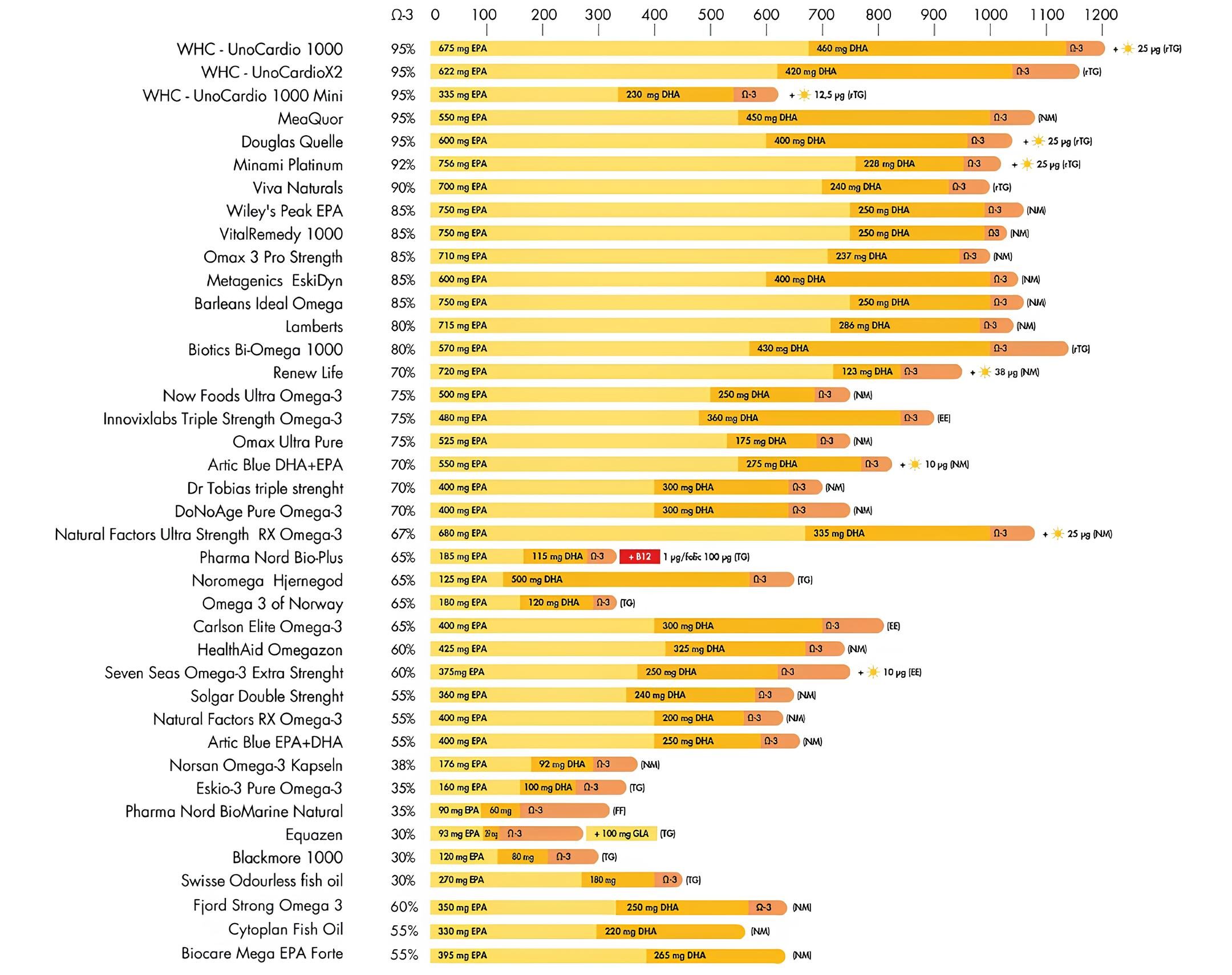

The rTG (r-triglyceride) form of EPA and DHA promotes maximum and faster absorption in the body compared to ethyl esters and probably compared to regular triglycerides or free fatty acids. For best results, we recommend administering with fatty foods such as yogurt, olive oil, or other fatty foods.
Comparison based on information provided online by distributors (as of June 2023).
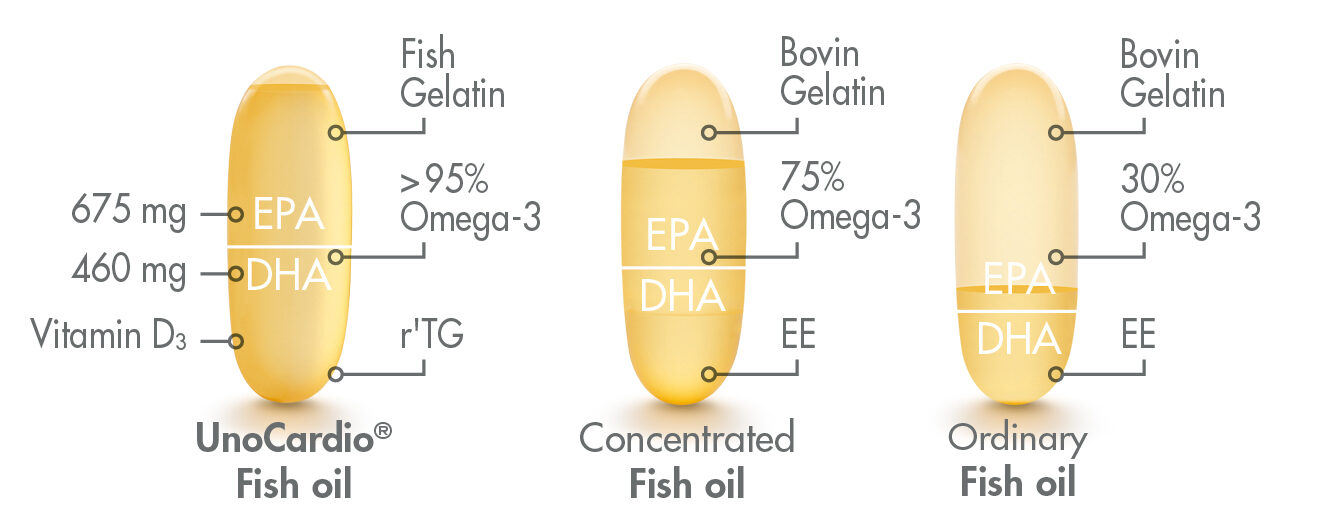
UnoCardio® - A major difference compared to other fish oils !
Concentration
This refers to the exact amount of the most important omega 3 fatty acids in the capsule, i.e. the concentration of DHA and EPA.
A 1000 mg fish oil capsule might contain only half or even less of DHA and EPA.
A 1000 mg capsule does not actually contain 1000 mg of pure Omega 3 fatty acids.
Always check the amount of DHA and EPA per gel capsule.
The TG form of EPA and DHA, more precisely the rTG (r-triglyceride) form promotes up to 70% better and faster absorption in the body compared to ethyl esters ( EE ). This means the purest and highest concentration of omega 3 fatty acids and less fillers and unnecessary, unhealthy fats.
See the adjacent graph. Based on your current omega 3 index, i.e. the omega 3 % contained in red blood cells, you can find here how much omega 3 you should take in order to reach the recommended index of 8%.
How many grams of EPA+DHA per day should you take to achieve the perfect 8% omega index
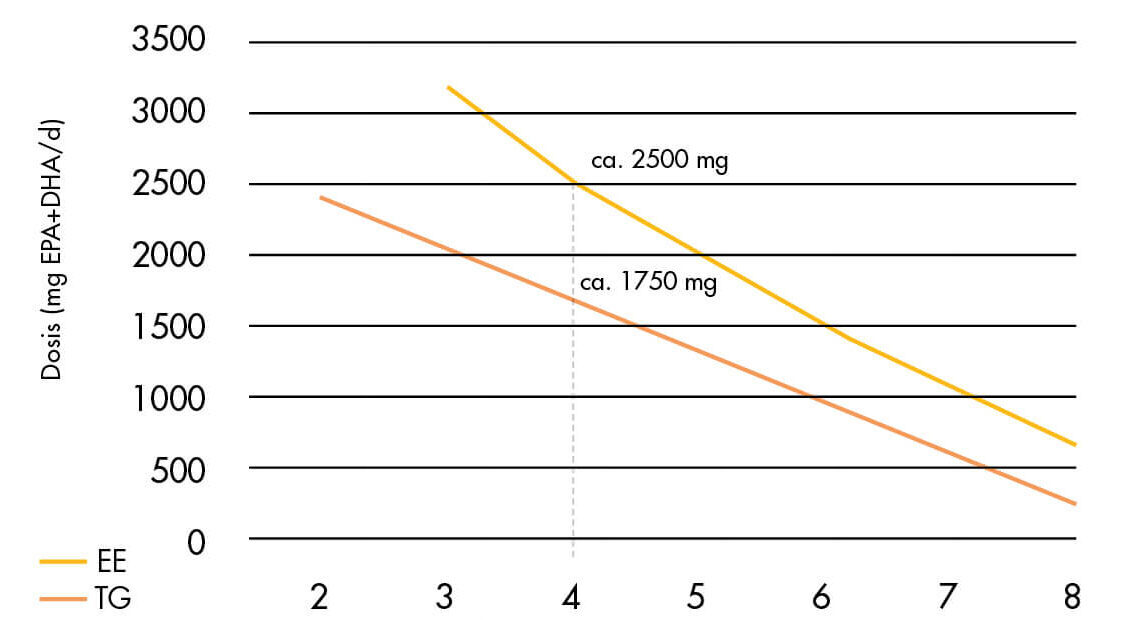
------ average European index 4%
Your current omega index % (percentage of omega 3 fatty acids contained in red blood cells)
Here it can be seen that if your current omega index is, for example, 4%, which is the average figure for Europeans, then to reach the index of 8%, you should take 2500 mg EPA + DHA per day of EE or ethyl ester or 1750 mg of EPA + DHA per day in the form of rTG or triglyceride . In about four months, the level of omega 3 in the cells, or the omega index, increases, and later on, the recommended amount of 1000 mg per day is usually enough to maintain it. The four-month period is related to the fact that red blood cells are renewed within 120 days, or 4 months.
Don't be fooled by different prices and complicated description of the 30, 60 or 90 capsule packs.
Take a closer look at the additional information on the back of the package and ask yourself two questions:
How much DHA+EPA is in one serving?
How many capsules = 1 serving?
You might be surprised how many capsules you need to take per day to get the 1g of EPA/DHA you need
Cheaper products will prove to be very expensive if you need four or more capsules a day.
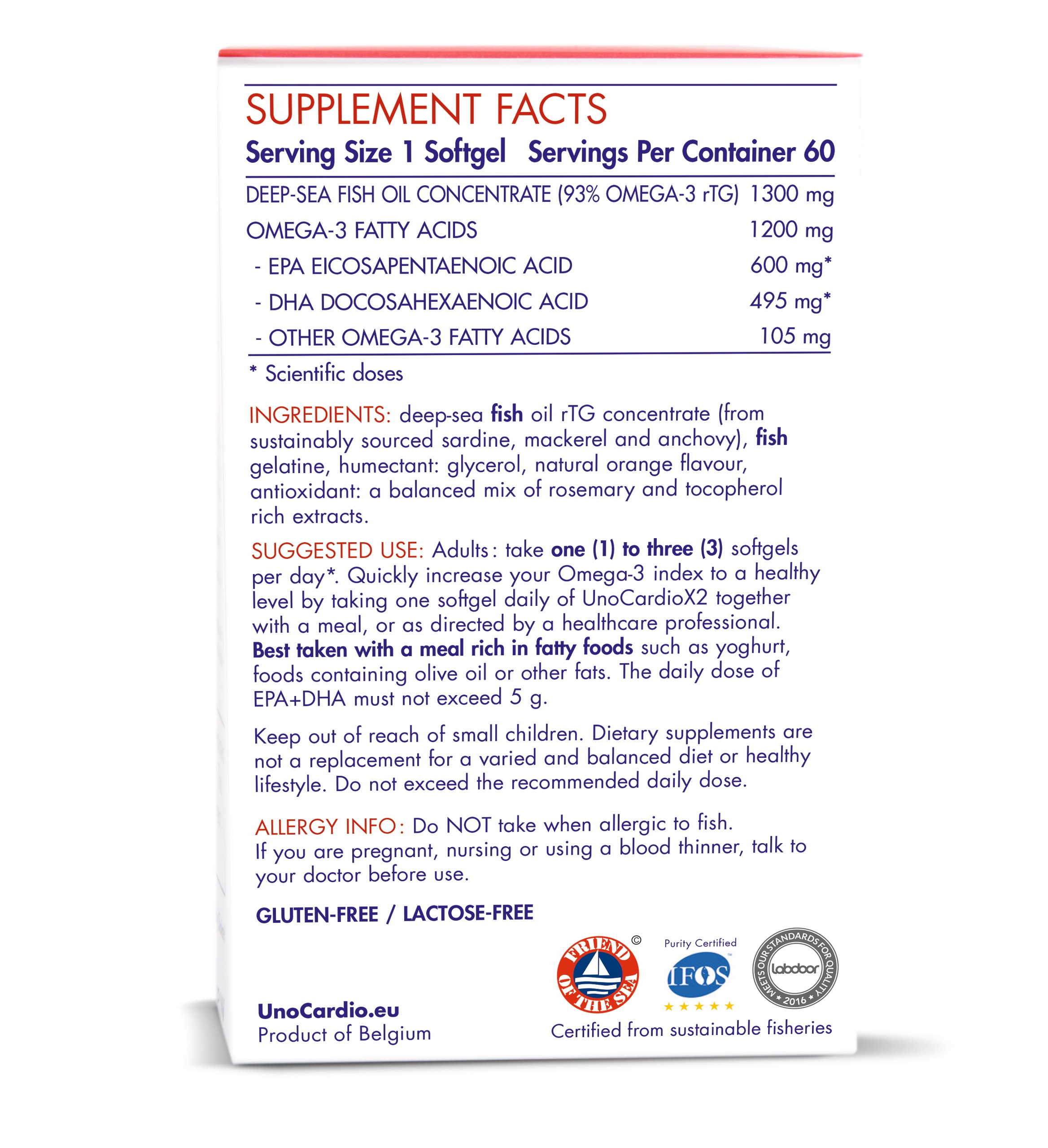
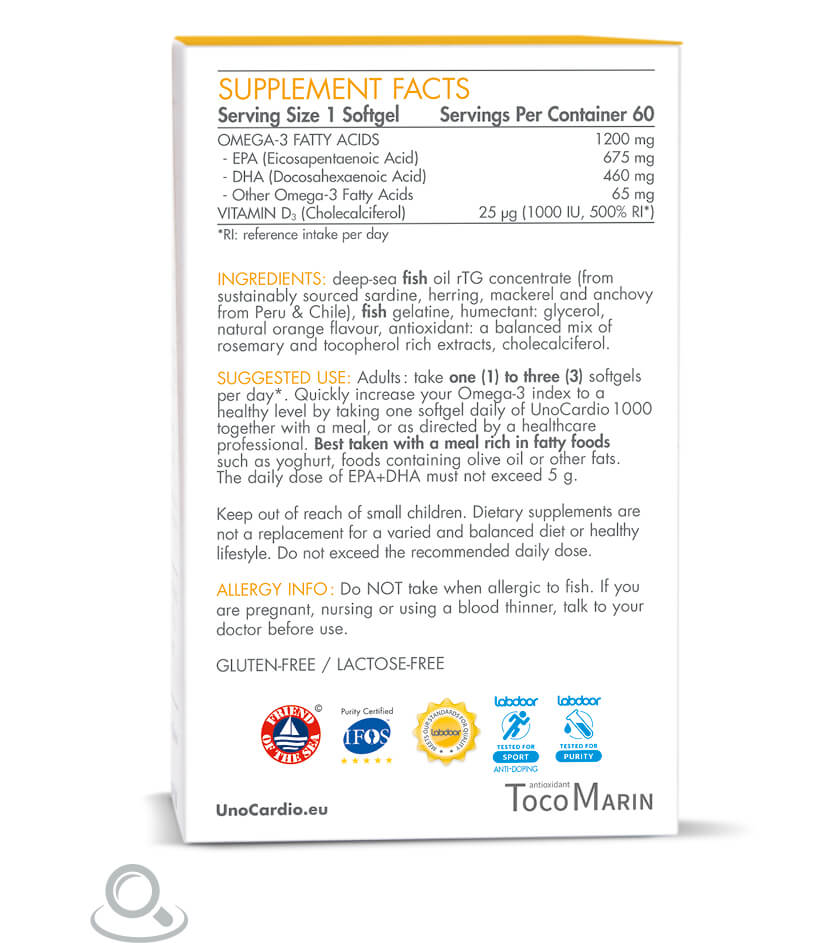
*You can find our product range and prices here: https://ambrosia.ee/tootekategooria/oomega-rasvhapped/
Some brands state that they have been IFOS certified. Sometimes this is true, but sometimes certification has of raw material sent by their supplier has been made, rather than the finished batch of product of a specific brand.
More information can be found at: https://certifications.nutrasource.ca/certified-products
IFOS tests of WHC Labs product batches can be found at:
https://certifications.nutrasource.ca/certified-products/brand?id=WHCC
You can make nature-friendly choices if you choose omega 3 oil obtained from non-endangered species that has also been purified in an environmentally friendly way. Our contract manufacturing facilities are Pharma cGMP certified and comply with the European environmental management standard EMAS.
